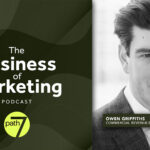By Will Offeman, CPO, WideOrbit
Impression-based selling and automated transactions have been hot topics in the broadcast TV industry for years. Unfortunately, traditional approaches rule today’s buys. According to an eMarketer report, 95% of local spot TV transactions are still completed with manual, traditional workflows.
It’s abundantly clear we need an approach that streamlines the process from start to finish for both traditional and automated transactions, digital and linear, all the way from pitch through to payment.
Automation creates a more efficient and cost-effective transaction process for local spot TV that benefits both advertisers and broadcasters. Investment in programmatic will inevitably continue, but to make the dream of efficiency a reality, the industry must simultaneously address the current pain points within traditional processes, through automation whenever applicable.
The following are a few of the most tedious, time-consuming, and therefore error-prone manual tasks that can benefit most from automation.
Automate the import of creative materials and electronic instructions
Two areas that reap the benefits of automation are the handling of electronic material instructions and the import of creative advertising materials. Handling electronic material instructions is an incredibly inefficient and risky process. One missed step or a single errant keystroke can create errors that incur significant costs. Automating the import of new and revised material instructions removes the potential for human error, streamlining processes to save money and valuable time.
Using automation to import creative materials metadata from outside entities into the traffic system is also a much more efficient and reliable process. Manual import and data entry is tedious processes susceptible to human error. As with electronic material instructions, automation here also saves considerable time and effort while significantly improving accuracy.
Automated makegood suggestions
Delivering on a makegood for a preempted spot is a lengthy process that can take weeks to complete. Makegoods are extremely tedious for both the seller and the buyers. Advertisers want to negotiate a makegood that will deliver the right number of viewers, representing the right demographics, at the correct time, and during the right programming for missed units.
Broadcasters must balance advertisers’ needs against a limited supply of inventory. The complexity of finding a spot that meets the advertiser’s criteria is the reason makegoods are so time-consuming. However, a makegood offer tool can automate the comparison of advertiser needs against available inventory to quickly and efficiently provide make good suggestions that the broadcaster can offer the advertiser. Manual effort is significantly reduced, the entire process becomes faster and easier for both buyer and seller, and the quality of the makegoods offered improves.
End-to-end order processing
Everything from order validation to payment can benefit from automation. Advertisers have unique requirements for the spots they purchase, such as desired dayparts and programming, competitor separation, and more. Using automation allows for validation at the point of order entry to ensure compliance with broadcaster-established business rules, based on customer-specific needs in both spot placement and reporting before a spot airs. Automation eliminates the time-consuming process of manual validation, as well as the need to identify and correct data errors after the spot runs.
From there, financial processes — from invoicing, to payments, to reconciliation — can be automated. Automating end-to-end accounting and collections processes increases on-time payments, improves cash flow, and reduces operating costs.
Programmatic transactions will be the way of the future, but traditional workflows aren’t disappearing anytime soon. Instead of trying to replace the old with the new, the industry would be better served by pursuing a holistic approach that accommodates both. Automating manual processes within traditional workflows will improve efficiency and reduce operating costs for broadcasters and advertisers alike.
###
Author Bio: Will Offeman is the Chief Product Officer at WideOrbit where he leads strategy, design, and development for all products. Will leverages decades of experience with TV and radio broadcasters, national cable networks, and digital publishers, to inform WideOrbit’s product roadmaps. As the media landscape continues to shift, Will is focused on evolving WideOrbit’s media operations platform to advance the unification of digital and linear advertising.






